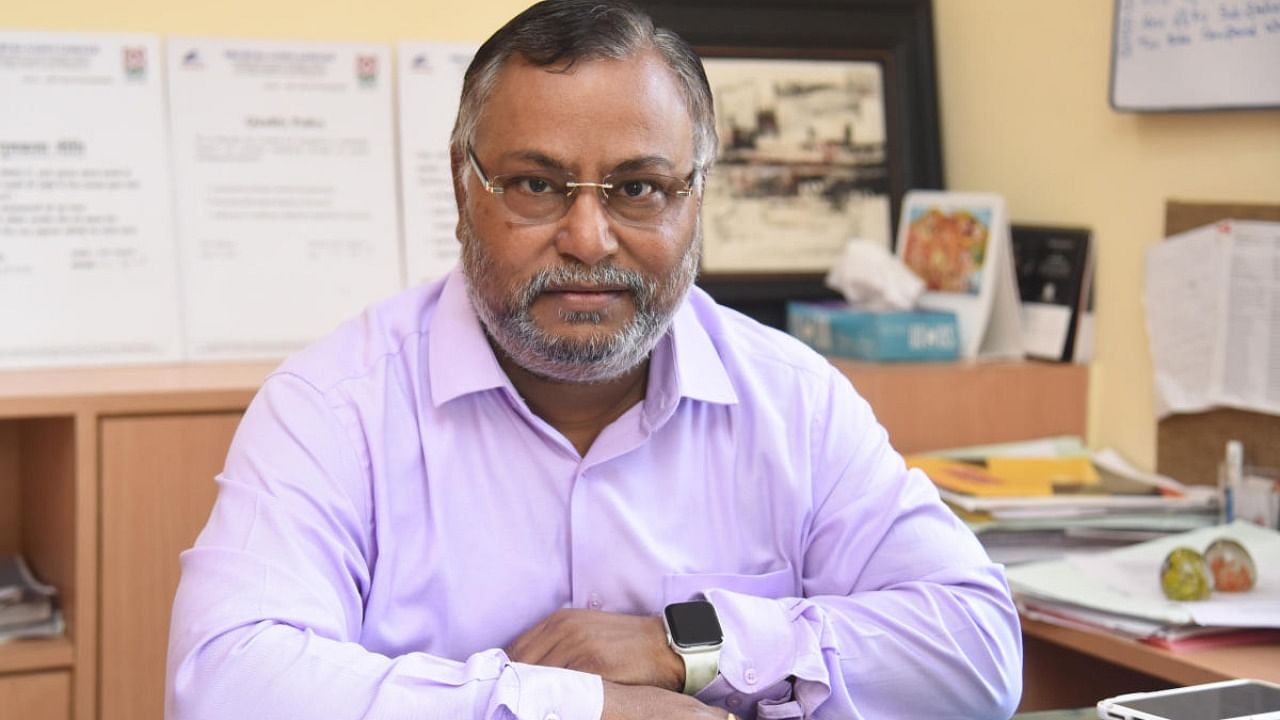

Two city companies, Bhuruka Gases and Universal Air Products, with a combined liquid oxygen production capacity of 105 metric tonnes, have shot to fame with their product becoming medical gold.
Hundreds of hospitals, both public and private, depend on the oxygen they produce to treat their Covid patients. With the caseload virtually exploding in the second wave, the twin companies are struggling to meet the massive demand for over a month.
“We supply (oxygen) in the morning and they ask us again by evening or ask between every eight-hour period,” said Subasish Guha Roy, Director, Universal Air Products.
The company has a distribution centre in Peenya. Oxygen produced at its plant in Kunigal, 60 kilometres away from the city, is brought here.
Besides the phone lines going off the hook with requests for oxygen, the distribution centre has also been flooded with vehicles with request for refill from 175 to 200 hospitals it caters to.
Every day, the company refills about 400 cylinders with oxygen for medical purposes. Police have been deployed at the centre to control the vehicles. They check every dispatch, while drug controllers stationed in shifts check outgoing vehicles.
In the pre-pandemic days, 50 and 100-bedded hospitals in the city would consume just one or two tanks of oxygen, which is equal to 50 or 100 cylinders. “The same hospitals now consume four times above the normal levels,” Roy revealed, his voice strained after answering so many SOS calls.
A Bommanahalli hospital that consumed 33 cubic metres for the last three months now needs 3,500 cubic metres a day and the hospital reached this new high on April 12.
“If this trend continues, the hospital will end up taking 10,000 or 15,000 cubic
metres a day. I never thought consumption levels (of oxygen) would go up by 60 times,” Roy said.
Weather conditions
The harsh weather is not helping the oxygen production, but for which the manufacturers could have produced at least a little more than they do.
“When the atmospheric air is warm, the production comes down. We were producing 40 tonnes a day. I am running short of 30-40 tonnes daily for my customers in Bengaluru alone,” Roy said. The unrelenting demand has dried up all the tanks that otherwise would keep at least 10,000 to 15,000 litres of minimum stock.
The suppliers blame the rules and guidelines laid down by the Centre for the oxygen crises. The Centre allowed oxygen to nine categories: ampoules and vials, pharmaceuticals, petroleum refineries, steel plants, nuclear energy facilities, oxygen cylinder manufacturers, wastewater treatment plants, food and water purification, and process industries. “They must knock off the seven exempted categories from
the list,” Roy said.
Export to other states is also depriving Bengaluru of oxygen.
“Supplies go to Maharashtra, Tamil Nadu, Andhra Pradesh and Telangana. This should stop. Aren’t patients dying here?” Roy asked.
While the only company that could meet the surging demand is JSW, it is supplying to other states due to demand from onsite customers like Linde and Bellox.
New plant at Dobbaspet
The onset of the Covid-19 pandemic last year has stalled the company’s plans to begin operations at its new nine-acre plant in Dobbaspet from September. “If only that plant is operational, I could have supplied 110-120 tonnes all over Karnataka,” he said.
Universal is also taking 10 metric tonnes of liquid oxygen from the Bhuruka Gases based in Whitefield.
Bhuruka’s director Satish Kesari said his plant manufactures 65 tonnes of oxygen a day. “Earlier, only 10% was used for medical purposes and the rest was for industries. But now, 80% goes for medical use,” he said. Nearly 50-55 tonnes of oxygen go for medical use, of which 40 tonnes are supplied to Bengaluru hospitals.
The company’s 20 tankers and 100 liquid oxygen cylinders are getting filled round-the-clock and sent to hospitals. Besides Karnataka, it supplies to Tamil Nadu and Andhra Pradesh.
“We supply medical oxygen to hospitals where we have our installations. We also supply to hospitals through dura cylinders and liquid oxygen to cylinder fillers. These cylinders in turn go to hospitals,” Kesari said, adding that the company also supplies to four oxygen manufacturers, including MNCs.
He said 30% of his business comes through liquid oxygen. “It takes minimum two years to install an air separation unit such as this with a minimum of Rs 100 crore investment. There are also requirements of land, water and power,” he says.
Power subsidy
Oxygen making plants are big power guzzlers. While Universal’s plant consumes 15 lakh units per month, its new plant is expected to consume 30 lakh units per month.
“When we have a cap on selling price, we should get power subsidy so that the price for life-saving products like oxygen does not escalate. We pay Rs 7.40 per unit of power in addition to nine per cent tax,” Roy says.
He estimated Bengaluru’s oxygen requirement as 150 to 200 metric tonnes every day. “Lowering tariffs will encourage more players to set up oxygen plants in Karnataka. Some financial incentives and help should be given for setting up plants,” he said.
